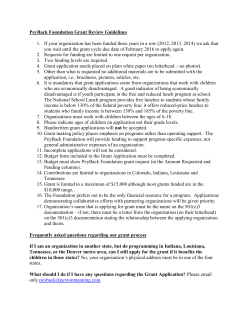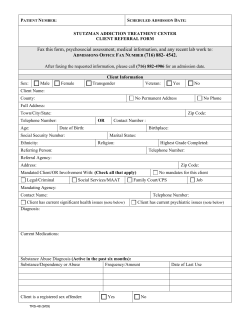
How St. Elizabeth Healthcare Overcame Observation Status Challenges and Streamlined
How St. Elizabeth Healthcare Overcame Observation Status Challenges and Streamlined Charge Capture Speakers Lorri Atkins, RN Sr. Director, Product Management Amanda Fishman, RN, BSN, MBA Manager, Charge Capture & Utilization Management, Revenue Cycle Integrity 2 Objectives Describe payer guidelines for observation status Review operational challenges with observation status and strategies to resolve them Identify common challenges associated with observation status coding 3 4 Issue Increased Payer Denials • Inpatient authorization requested, only paying for observation RAC is focused on short stays • Denying inpatient and approving observation 5 Short Stay RAC Activity: St. Elizabeth Healthcare 2,832 2,272 1,216 6 Short Stay RAC Activity: St. Elizabeth Healthcare 90% 7 2011: Top 50% of DRG’s Requested (226 Short Stay Records Requested) 8 2012: Top 50% of DRG’s Requested (1,569 Short Stay Records Requested) 160 9 2013: Top 50% of DRG’s Requested (568 Short Stay Records Requested) 10 How to Reduce RAC Denial Risk Logistical Strategies • 24/7 Care Coordination/Case Managers • Physician Advisors • Clinical Documentation Improvement Specialists 11 How to Reduce RAC Denial Risk Operational strategies • Adopt and stay current with accepted industry guidelines − InterQual®/Milliman (MCG) • Physician documentation education − Do not document “Observe” in any H&P if intent is Inpatient − Document what the patient is at risk for • “I’m uncomfortable sending the patient home because…” • “The patient is at risk for…” • “Failed outpatient treatment” • Care coordination to assist at point of entry 12 Observation Growth 2010-2012 13 Observation 18 Month Trend 14 Observation Cases Called to Physician Advisor Conversion Rates 15 Observation Reimbursement Issues Risks: underuse of observation Risks: overuse of observation • Unnecessary inpatient admissions • Financial – lower payment to the hospital vs. inpatient • Short inpatient stays and CMS compliance - RAC target, CERT audits, OIG work plan issue, MAC concern • Loss of 3 day qualifying inpatient stay for SNF coverage • Short inpatient stays: decrease CMI, payment denials • Increased average inpatient LOS and profiling implications • Higher out-of-pocket expense for patients 16 Common observation challenges 1. All patients should be placed in observation until reviewed 2. When does Observation start 3. Charging for injections and infusions 4. Billing for a patient with >48 hours of Observation 5. Separately monitored procedures (actual times vs. policy considerations) 6. Observation is not a place 7. Clinicians are taught to prioritize by acuity 8. Because our observations can be on an inpatient floor, the nurse does not typically does not know the status of a patient 17 Managing Observation Charging Streamlined Workflows to have one consistent workflow across all 4 hospitals Developed Productivity Standards • Increased productivity from 4 charts an hour to 7 charts an hour, 43% increase Reports developed for our specific needs • Productivity • Condition Code 44 • Number of Hours in Observation 18 Managing Observation Charging (con’t) Improved Productivity: • Consistent automatic calculation of observation hours based on documentation • Exclusion Time • Injection/Infusion hierarchy now integrates with ED visit • Direct admit charges adds automatically based on documentation • No longer have to manually add/remove charges within the electronic health record • No longer have to allocate which charge goes to which department 19 Four year partnership with Optum achieving consistent E/M charging across outpatient facilities. 20 ED Productivity Streamlined workflows to have one consistent process between all 5 ED’s Started a work from home program Reports developed for our specific needs • Productivity Productivity Doubled • 6-9 charts per hour to >18 charts per hour Injections/Infusions automatically calculate correct hierarchy 21 Injection/Infusion Consistency ED • Initiative started in 2010 • Reduced missing stop times by 92% Observation • Initiative started in 2011 • Reduced missing stop times by 90% 22 Questions? Amanda Fishman, RN, BSN, MBA Manager, Charge Capture & Utilization Management, Revenue Cycle Integrity Amanda.Fishman@stelizabeth.com Lorri Atkins, RN Sr. Director, Product Management Lorri_Atkins@picis.com 23
© Copyright 2025





















